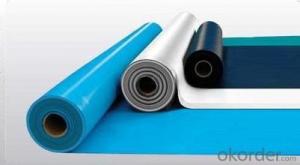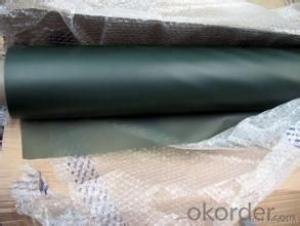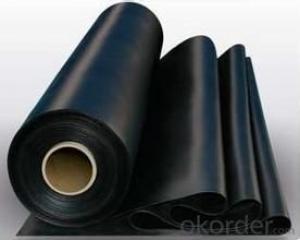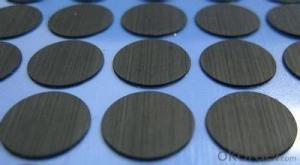EPDM Modified Waterproof Membrance for Basement
- Loading Port:
- Tianjin
- Payment Terms:
- TT or LC
- Min Order Qty:
- 10000 m²
- Supply Capability:
- 15000000 m²/month
OKorder Service Pledge
OKorder Financial Service
You Might Also Like
Quick Details
Type: | Waterproof Membrane | Place of Origin: | Shandong, China (Mainland) | Brand Name: | CMAX |
Model Number: | Excaid-D | thickness:1.2mm,1.5mm,2.0mm: | Raw mateiral:EPDM rubber | width:1200mm: | Standard:GB18173.1--2006 |
length:20m: | Tear strength:>=25KN/m | break tensile strength >=7.5MPa: | waterproof:0.3MPa,30min | break elongation:>=450%: | usage:building waterproof |
Packaging & Delivery
Packaging Details: | PE membrane and pallet |
Delivery Detail: | within 20 days after receiving downpayment |
Technical Specification:
Type | Waterproof Membrane | |||
Material | EPDM RUBBER | |||
Thickness | 1.2mm; 1.5mm;2.0mm | |||
Weight(kg/m2) | 1.2mm | 1.5mm | 2.0mm | |
1.54-1.58 | 1.79-1.83 | 2.25-2.29 | ||
Length | 20m/Roll | |||
Width | 1.2m | |||
Usage | basements, ponds, Lake, steel structure roofing, underground, tunnels etc. | |||
Packing | 24 sqm/ROLL | |||
Loading in Container | ROLLS | |||
Colors | customized | |||
Enclosure | ||||
Technical Data:
Tensile Strength N/CM | Normal temperature: ≥60 ; 60°C: ≥30 |
Breaking Elongation % | Normal temperature:≥400 ; -20°C: ≥10 |
Tear Resistance N | ≥20 |
Impermeability, 30 min no leakage | 0.3Mpa |
Low Temperature Bending °C | ≥ -20 |
Heating Shrinking mm | Extension: ≥2 Shrink:≥4 |
Heat Resistance (80°C×168h) | Tensile Strength % : ≥80 ; Keeping rate of adhesive breaking:≥70 |
Alkali resistance (10% ca (oh)2 solution,normal temperature ×168h)) | Tensile Strength % : ≥80 ; Keeping rate of adhesive breaking:≥80 |
Synthetic aging | Tensile Strength % : ≥80 ; Keeping rate of adhesive breaking:≥80
|
FAQ
1.Could you offer free sample ?
Yes , free sample is available .
2.What's the MOQ ?
The MOQ is 5000 M2
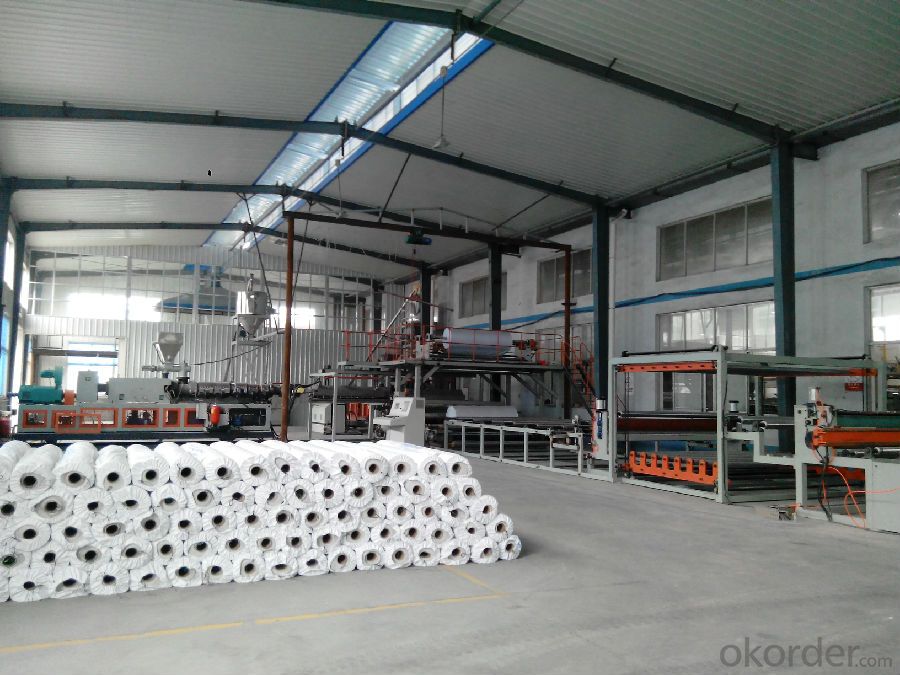
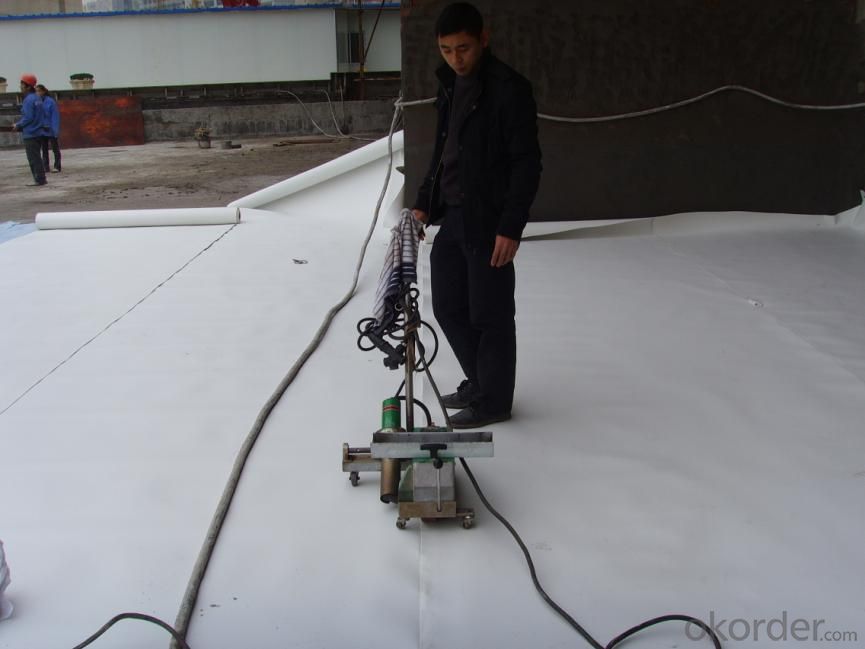
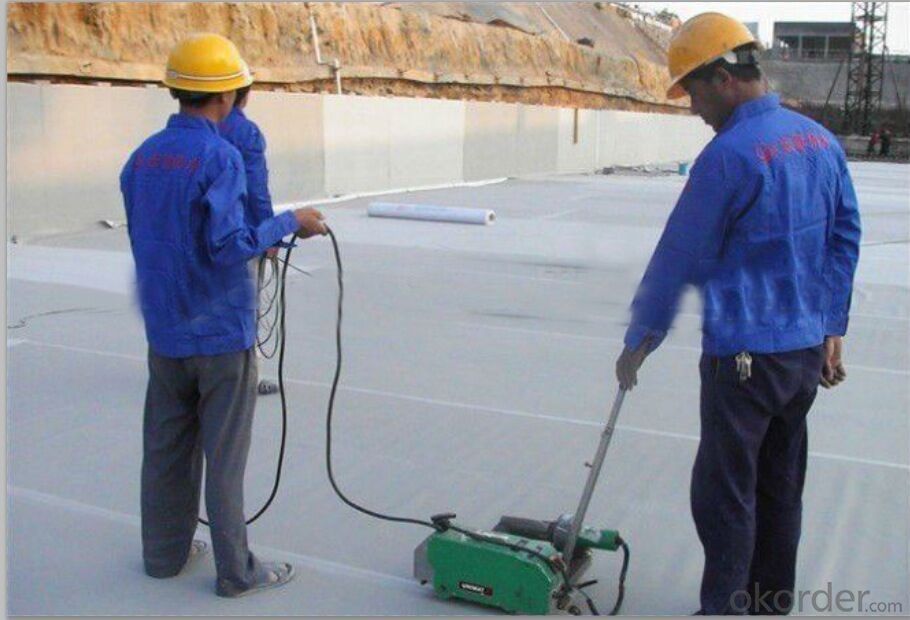
- Q:How does a waterproofing membrane handle exposure to high temperatures?
- The ability of a waterproofing membrane to withstand high temperatures relies on its composition and quality. These membranes are typically made from durable materials like bitumen, EPDM, or PVC, which have high melting points and can resist heat. These materials are carefully selected to ensure that the membrane remains intact and effective even when exposed to elevated temperatures. The resistance of high-quality waterproofing membranes to heat is enhanced through the use of additives and fillers during manufacturing. These additives help the membrane maintain its integrity, preventing it from softening, melting, or becoming brittle under high temperature conditions. Additionally, the successful installation of the waterproofing membrane is crucial to its ability to handle high temperatures. Proper installation techniques, such as ensuring adequate adhesion and seam sealing, are essential for maintaining the membrane's effectiveness and preventing any potential damage caused by heat exposure. To summarize, waterproofing membranes are specifically engineered to withstand high temperatures. Their composition, quality, and installation techniques all contribute to their ability to resist heat without deteriorating or losing their waterproofing properties.
- Q:Can a waterproofing membrane be used on crawl spaces?
- Yes, a waterproofing membrane can be used on crawl spaces. Crawl spaces are often prone to moisture and water issues, which can lead to mold growth, structural damage, and other problems. Installing a waterproofing membrane can help prevent water from seeping into the crawl space, keeping it dry and protected. The membrane is typically made of a durable and flexible material that can withstand the conditions of a crawl space. It is installed on the walls and floor of the crawl space, creating a barrier against moisture. This can be especially beneficial in areas with high groundwater levels, heavy rainfall, or homes located in flood-prone areas. Additionally, a waterproofing membrane can help improve indoor air quality by preventing the growth of mold and mildew, which thrive in damp environments. Overall, using a waterproofing membrane in crawl spaces is an effective way to prevent water damage and maintain a healthy living environment.
- Q:Can a waterproofing membrane be used on different types of surfaces, such as concrete, wood, or metal?
- A variety of surfaces, including concrete, wood, and metal, can benefit from the use of a waterproofing membrane. These membranes are designed to create a barrier that prevents water from causing damage by penetrating the surface. They are versatile and can adhere to different materials, making them suitable for various applications. For concrete surfaces, the application of a waterproofing membrane can protect against water intrusion and prevent issues such as cracks, corrosion, or mold growth. It is effective for concrete foundations, basements, or retaining walls, ensuring that they remain dry and structurally sound. When it comes to wood, a waterproofing membrane acts as a protective layer that prevents water absorption, warping, rotting, or decay. It is particularly useful for exterior surfaces like decks, balconies, or fences, as it enhances their lifespan and preserves their integrity. In the case of metal surfaces, a waterproofing membrane is capable of preventing rusting and corrosion caused by water exposure. By creating a barrier that seals out moisture, it protects metal roofs, gutters, or other metal structures from water damage. It is important to consider that different types of waterproofing membranes may be more suitable for specific surfaces. For instance, liquid-applied membranes are easily applied on irregular surfaces like concrete, while sheet membranes are more appropriate for flat or smooth surfaces. Consulting with a professional or manufacturer is advisable to determine the most suitable waterproofing membrane for a specific surface and application.
- Q:Can a waterproofing membrane be used on tunnels with ventilation systems?
- Yes, a waterproofing membrane can be used on tunnels with ventilation systems. In fact, it is commonly used to prevent water infiltration and protect the structure of the tunnel. The membrane is installed on the exterior walls and ceiling of the tunnel, ensuring that any water that may enter is diverted away from the tunnel and its ventilation system. This helps to maintain the integrity of the tunnel and ensures proper functioning of the ventilation system.
- Q:What is the accounting subject of the waterproofing membrane
- following two subjects repair costs. For the use of materials used in construction, included in the construction in progress
- Q:Can a waterproofing membrane be used on plaster surfaces?
- Yes, a waterproofing membrane can be used on plaster surfaces. It provides a protective barrier that prevents water penetration and helps to enhance the durability and longevity of the plaster surface.
- Q:Does a waterproofing membrane affect the appearance or finish of a surface?
- The appearance or finish of a surface can be affected by a waterproofing membrane. When the membrane is applied, it forms a barrier that stops water or moisture from getting into the surface. The type of membrane used determines the impact it has on the surface. It can form a visible layer on top of the surface, changing how it looks. For instance, a clear liquid membrane can give it a shiny finish, while a sheet membrane can give it a textured or patterned surface. Some membranes may even alter the color or darken the surface slightly. Therefore, it's crucial to consider how a waterproofing membrane will affect the aesthetics of the surface before using it, particularly if maintaining the original appearance is important.
- Q:Can a waterproofing membrane be applied over existing waterproofing layers?
- Yes, a waterproofing membrane can be applied over existing waterproofing layers. However, it is important to assess the condition of the existing layers to ensure they are sound and can provide a proper substrate for the new membrane. Additionally, proper surface preparation and compatibility between the existing layers and the new membrane should be considered to ensure a successful and long-lasting waterproofing system.
- Q:What type of maintenance is required for a waterproofing membrane?
- Regular maintenance is required for a waterproofing membrane to ensure its effectiveness and longevity. This maintenance typically includes inspecting the membrane for any signs of damage, such as cracks or tears, and promptly repairing them. Additionally, it is important to keep the membrane clean and free from debris to prevent clogging or blockages. Regular inspections and maintenance will help to extend the life of the waterproofing membrane and ensure it continues to effectively protect the underlying structure.
- Q:Are waterproofing membranes resistant to chlorine exposure?
- Yes, waterproofing membranes are typically resistant to chlorine exposure.
1. Manufacturer Overview |
|
|---|---|
| Location | |
| Year Established | |
| Annual Output Value | |
| Main Markets | |
| Company Certifications | |
2. Manufacturer Certificates |
|
|---|---|
| a) Certification Name | |
| Range | |
| Reference | |
| Validity Period | |
3. Manufacturer Capability |
|
|---|---|
| a)Trade Capacity | |
| Nearest Port | |
| Export Percentage | |
| No.of Employees in Trade Department | |
| Language Spoken: | |
| b)Factory Information | |
| Factory Size: | |
| No. of Production Lines | |
| Contract Manufacturing | |
| Product Price Range | |
Send your message to us
EPDM Modified Waterproof Membrance for Basement
- Loading Port:
- Tianjin
- Payment Terms:
- TT or LC
- Min Order Qty:
- 10000 m²
- Supply Capability:
- 15000000 m²/month
OKorder Service Pledge
OKorder Financial Service
Similar products
New products
Hot products
Hot Searches
Related keywords
